What are Marine Explosion-proof Lighting: Illuminating Safety at Sea
Because of elements such as saltwater exposure, corrosive atmospheres, and the probable existence of combustible gases and vapors, marine environments are inherently hazardous. Safety is crucial in these environments, whether they be offshore oil and gas platforms, commercial vessels, or dockyards. Marine explosion-proof lighting is specifically developed to address these issues and offer illumination while maintaining safety. This article dives into the relevance of marine explosion-proof lighting, its operating principles, advances, and crucial role in protecting human safety and the integrity of marine assets.
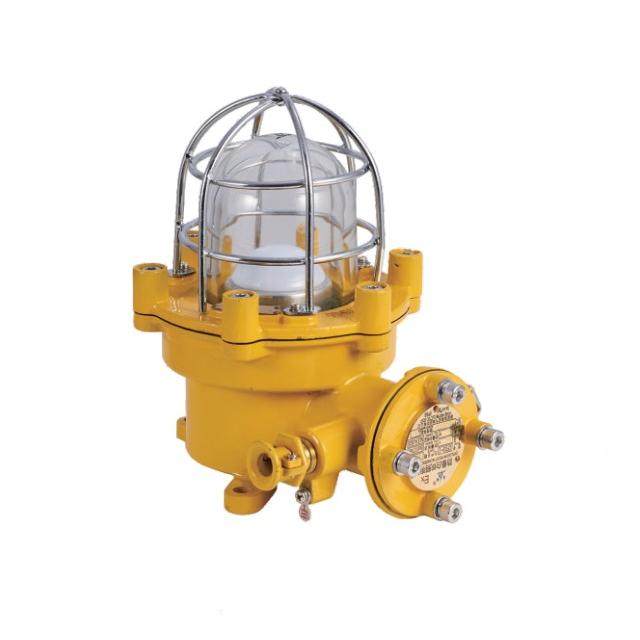
What is the Significance of Marine Explosion-Proof Lighting
Preventing Ignition
Explosive atmospheres are caused by combustible compounds interacting with air on ships, vessels and ports. The smallest spark or heat source might spell tragedy. Explosion-proof lighting’s primary role is to eliminate potential ignition sources, ensuring that the lighting system itself doesn’t contribute to hazardous conditions.
Compliance and Regulations
International organizations such as the International Maritime Organization (IMO) and local maritime authorities impose rigorous controls on marine organizations. These regulations require the installation of explosion-proof lighting in certain zones or regions prone to explosive atmospheres, emphasizing the significance of these systems.
Enhancing Visibility
Aside from safety considerations, appropriate lighting is essential for efficient operations on ships. Ship explosion-proof lighting not only protects safety but also aids in productivity during important operations performed in difficult conditions.
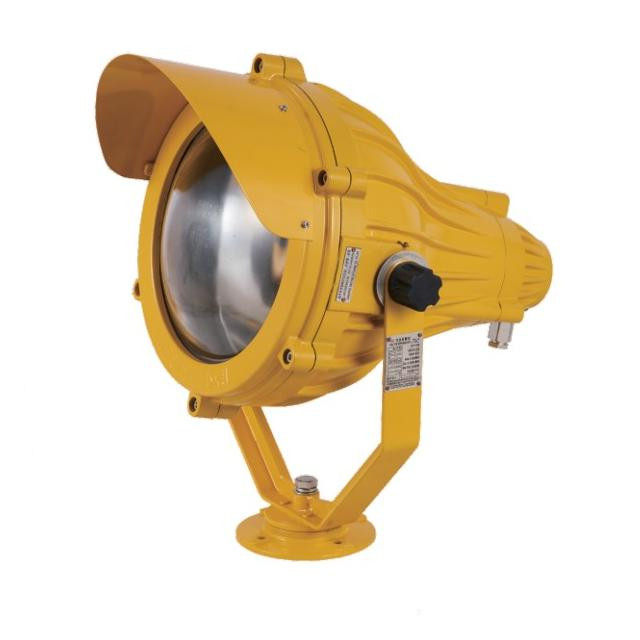
What is the Working Principles of Marine Explosion-Proof Lighting
The concepts of containment, pressure release, cooling, and sturdy construction govern marine explosion-proof lighting. These guidelines ensure that lighting fixtures continue to be a safety advantage in dangerous maritime conditions.
1. Encapsulation and Containment
At the heart of marine explosion-proof lighting is the principle of encapsulation. These lighting fixtures are built with strong enclosures and tight seals to keep dangerous gases, vapors, and dust out of the fixture’s internal components. This confinement ensures that any potential ignition sources, such as sparks or heat created by the fixture, are isolated and unable to come into touch with the explosive atmosphere surrounding it.
2. Pressure Release and Rugged Construction
The design incorporates pressure release systems in the unlikely case of an internal explosion within the fixture. These devices control the discharge of pressure and gases, preventing the fixture’s container from rupturing or creating secondary explosions. The construction of explosion-proof lighting fixtures is rugged and robust, capable of withstanding the physical stresses caused by the maritime environment, including vibrations, shocks, and heavy motion.
3. Cooling Mechanisms
Explosion-proof lighting fixtures are built to effectively dissipate heat. Excessive heat can be dangerous in explosive atmospheres, perhaps causing ignite. To combat this, explosion-proof fixtures include cooling devices that keep the surfaces at safe temperatures, reducing the risk of heat-induced igniting.
4. Materials and Corrosion Resistance
The materials utilized in maritime explosion-proof lighting systems are critical. These fixtures are made of materials that are resistant to corrosion from saltwater exposure and are long-lasting in the tough marine environment. Corrosion-resistant coatings, seals, and enclosures are used to preserve the lighting fixtures’ longevity and effectiveness even in corrosive saltwater conditions.
5. Electrical Isolation and Sealed Wiring
To prevent sparks or electrical faults from igniting surrounding explosive atmospheres, electrical components within explosion-proof lighting fixtures are isolated and sealed. All wiring connections are sealed to prevent the escape of gases or sparks, ensuring that the internal workings of the fixture remain insulated and contained.
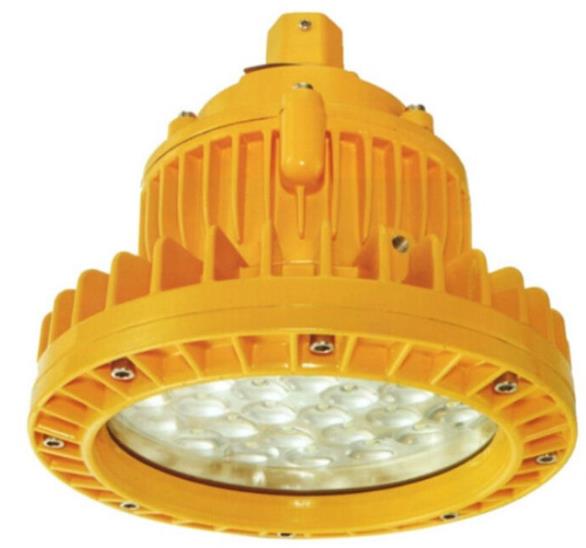
What are Common Types of Marine Explosion-Proof Lighting
The maritime industry’s commitment to safety is evident in the range of marine explosion-proof lighting solutions available. Here are some common types of marine explosion-proof lighting that play a pivotal role in ensuring safety at sea.
1. Explosion-Proof Floodlights
Explosion-proof floodlights are adaptable lighting fixtures used on ships, offshore platforms, docks, and ports to provide comprehensive illumination in hazardous environments. These fixtures produce brilliant light, efficiently lighting large areas while keeping to strict safety standards. They are especially useful in locations where flammable gases or vapors may be present, as they provide visibility without igniting combustible materials.
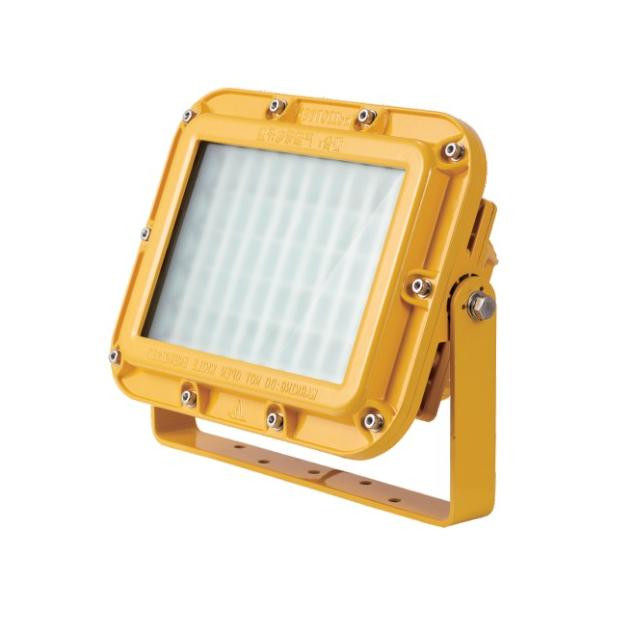
2. Explosion-Proof Emergency Lighting
In maritime contexts, where power outages or emergency scenarios can occur, emergency lighting is critical. Exit signs, escape route illumination, and other emergency fixtures that operate in the event of a power outage are examples of explosion-proof emergency lighting. These lights have backup power sources, ensuring continuous illumination during emergency situations and facilitating quick evacuations and responses.
3.Explosion-Proof LED Fixtures
Because of its energy efficiency, low heat output, and long lifespan, LED technology has transformed naval lighting. Explosion-proof LED lights are employed in a variety of marine applications, including decks and walkways as well as tight places. They provide consistent illumination without the possibility of heat buildup or sparks, making them a more secure solution in potentially hazardous areas.
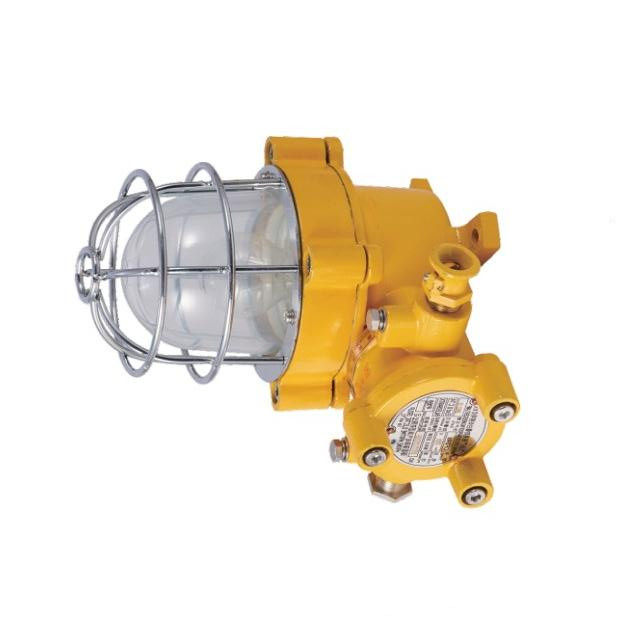
4. Explosion-Proof Navigation Lights
Navigation lights are critical for maritime safety because they allow ships to transmit their whereabouts and movements to other vessels. Explosion-proof navigation lights are built to resist the harsh sea environment while meeting international standards. These lights guarantee that vessels are visible even in inclement weather, facilitating safe navigation.
5. Explosion-Proof Searchlights
Searchlights are essential for nighttime navigation, search and rescue, and offshore activities. Explosion-proof searchlights are designed to keep sparks and heat from escaping, lowering the risk of igniting flammable chemicals in the surrounding environment. These lights emit intense light beams that improve visibility and safety during crucial activities.
6. Explosion-Proof Pendant Lights
Pendant lights are hung fixtures that can be used both indoors and outdoors. In hazardous marine areas where suspended lighting is required, explosion-proof pendant lighting is important. They provide focused illumination while retaining safety, ensuring that workers have adequate lighting for their activities even in potentially explosive environments.
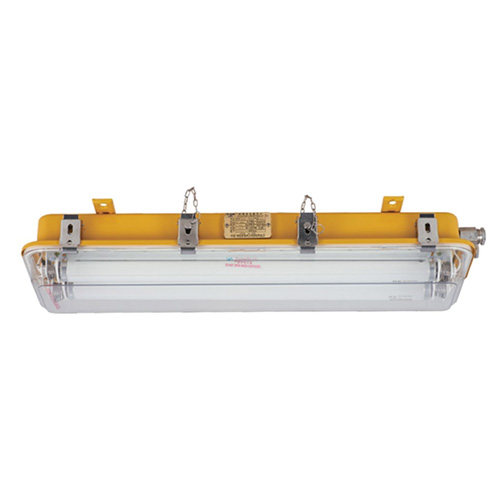
7. Explosion-Proof Tank Lights
Specialized lighting solutions are required for confined spaces and tanks on ships or offshore installations. Explosion-proof tank lights are designed for such environments, providing focused illumination without the risk of ignition. These lights play a critical role in ensuring safe working conditions in tight spaces where flammable substances might be present.
What are Advancements in Marine Explosion-Proof Lighting
The Evolution of LED Technology
LED (Light Emitting Diode) technology has transformed the lighting sector, and its impact on marine applications is as important. LEDs have unrivaled advantages, such as energy efficiency, decreased heat generation, and longer lifespans. These benefits are amplified in the context of explosion-proof lighting. LED-based explosion-proof lighting fixtures use less energy while releasing less heat, lowering the risk of igniting combustible compounds in the environment. Furthermore, their longer lifespans result in lower maintenance requirements, which contributes to operational efficiency and cost savings.
Robust Construction and Materials
The hostile marine environment necessitates lighting fixtures that can survive corrosive elements such as saltwater as well as physical pressures caused by continual movement. Material science advances have resulted in construction materials that are highly resistant to corrosion, impact, and degradation. Explosion-proof lighting fixtures now utilize specialized coatings, durable enclosures, and seals that prevent the ingress of water, dust, and corrosive agents. These innovations ensure that the lighting systems remain operational and effective even in the harshest maritime conditions.
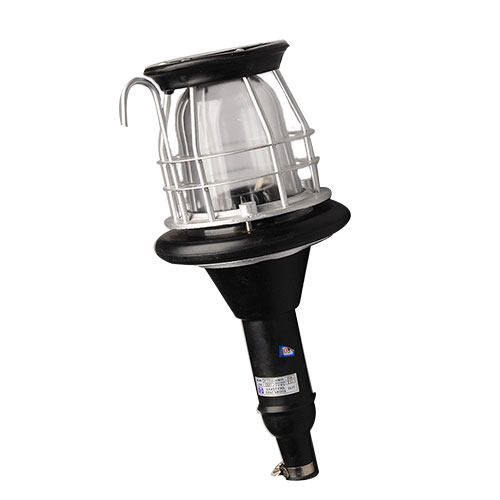
Smart Lighting Solutions
Another notable improvement in maritime explosion-proof lighting is the incorporation of smart technology. Smart lighting systems include features like remote control, dimming, and monitoring. This not only improves convenience, but also allows for improved energy management and modification of lighting conditions based on specific requirements. Real-time monitoring provides significant insights into lighting system performance, allowing maintenance personnel to identify possible faults quickly and increase overall efficiency.
Wireless Communication and IoT Integration
Wireless communication and the Internet of Things (IoT) have paved the way for new opportunities in marine explosion-proof lighting. These technologies enable data transmission and communication between lighting fixtures and central control systems to be seamless. Crew members and maintenance personnel can access real-time data on the status of lighting units, allowing for proactive maintenance planning, rapid response to anomalies, and the ability to optimize lighting conditions remotely.
Safety and Compliance
The enhancement in safety is perhaps the most important feature of developments in marine explosion-proof lighting. These technologies are in accordance with worldwide norms and standards established by organizations such as the worldwide Maritime Organization (IMO) and local maritime authorities. Maritime operators secure their personnel and assets while also adhering to severe safety rules by using the most recent explosion-proof lighting systems.
Summary
The importance of marine explosion-proof lighting in hazardous areas serves as a shield against potential disasters, safeguarding worker safety and the integrity of maritime industrial assets. LED explosion-proof lighting is a crucial component in the marine industry due to its capacity to prevent ignition risks, improve safety, maintain production, and comply with laws. As technology evolves, explosion-proof lighting systems will continue to evolve, playing a pivotal role in striking the delicate balance between safety, productivity, and operational continuity.


